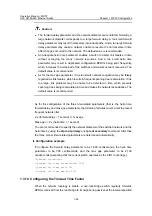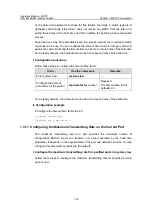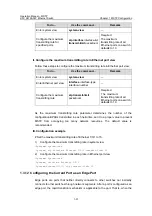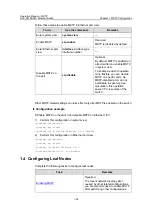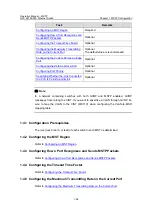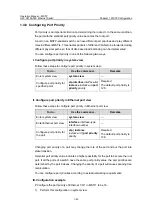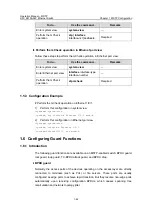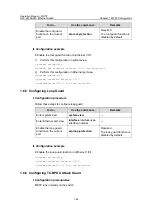
Operation Manual – MSTP
H3C S3100-52P Ethernet Switch
Chapter 1 MSTP Configuration
1-37
1.4.6 Configuring a Port as an Edge Port
Refer to
Configuring the Current Port as an Edge Port
1.4.7 Configuring the Path Cost for a Port
The path cost parameter reflects the rate of the link connected to the port. For a port on
an MSTP-enabled switch, the path cost may be different in different MSTIs. You can
enable flows of different VLANs to travel along different physical links by configuring
appropriate path costs on ports, so that VLAN-based load balancing can be
implemented.
Path cost of a port can be determined by the switch or through manual configuration.
I. Standards for calculating path costs of ports
Currently, a switch can calculate the path costs of ports based on one of the following
standards:
z
dot1d-1998
: Adopts the IEEE 802.1D-1998 standard to calculate the default path
costs of ports.
z
dot1t
: Adopts the IEEE 802.1t standard to calculate the default path costs of ports.
z
legacy
: Adopts the proprietary standard to calculate the default path costs of
ports.
Follow these steps to specify the standard for calculating path costs:
To do...
Use the command...
Remarks
Enter system view
system-view
—
Specify the standard for
calculating the default
path costs of the links
connected to the ports of
the switch
stp pathcost-standard
{
dot1d-1998
|
dot1t
|
legacy
}
Optional
By default, the legacy
standard is used to
calculate the default path
costs of ports.
Table 1-8
Transmission rates vs. path costs
Rate
Operation mode
(half-/full-duplex)
802.1D-1998
IEEE 802.1t
Latency
standard
0 —
65,535
200,000,000
200,000
10 Mbps
Half-duplex/Full-duplex
Aggregated link 2 ports
Aggregated link 3 ports
Aggregated link 4 ports
100
95
95
95
2,000,000
1,000,000
666,666
500,000
2,000
1,800
1,600
1,400







